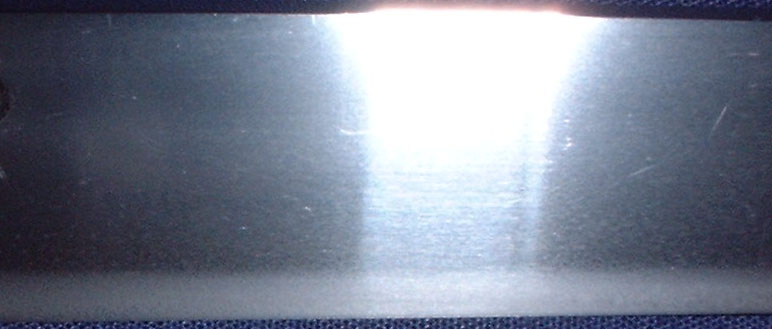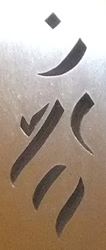A small consideration about Shintogo Kunimitsu.
Shintogo Kunimitsu is very famous as the greatest smith
in the Soshu tradition.
In the history, Ichimonji Sukezane, Saburo Kunimune and Awataguchi Kunitsuna
were pioneers of the Soshu tradition. They came from their home towns to
"Kamakura" where the government city in 13th century. Then, their
student Shintogo became a founder of the school what we call Soshu tradition
today.
One of the biggest characters of his blades is the steel. His steel is
mixed forging, but it is not the criterions of the quality of his steel.
The appreciable point of his steel is the particles. His steel is full
of jinie particles, and that array along the small wood grain layer pattern.
It appears very beautifully.
Many smiths in later period try to make his steel, but
difficult to get success. Most of cases, they only copy his layer pattern.
An example, a tanto by Shintogo Kunimitsu.
The steel of this tanto is not emphasized its layer pattern.
It is very beautiful steel, but it is difficult to show the form of particles
by pictures.

One more unique character of his blades is engravings
in the blade. We should study his engravings, as well as the steel.
Many of his blades have some engravings like Bonji, Suken,
Koshi-hi, Hashi or some others. All of them are simple, we have never seen
some complicated engravings like dragon. Each of his engravings mean some
symbol of Buddha. We can see that he didn't put them as decoration.
Probably, we should feel his serious belief in Buddhism,
even though such a spirit is not taken heavily in today's Art-sword world.
(One of his blade has his Buddhish name "Koshin" in the tang,
that means shining mind.)
Additionally, his hamon is suguha, it doesn't sound noisy.
The simple engravings are very impressive while the stoic patterned hamon.
The total blade character brings us some spiritual power, rather than practical
force. He may be the first smith who design the blade to express power
of prayer.
His engraving style became a tradition of the Soshu school,
but the descendants' work smells decoration.
-Note-
Bonji = Sanskrit letters. Initials of some Buddha.
Suken = simple sword without handle. It suggests the
buddha "Fudo-Myo'O".
Koshi-hi = short and narrow groove near the tang. Simplified
from Suken.
Hashi = chop sticks. Symbol of one Buddish prayer way.
A tanto blade of Shintogo style, made by our smith.

A Sanskurit letter of Fudo-Myo'O by Shintogo style

Home > Information, Blade > Shintogo
